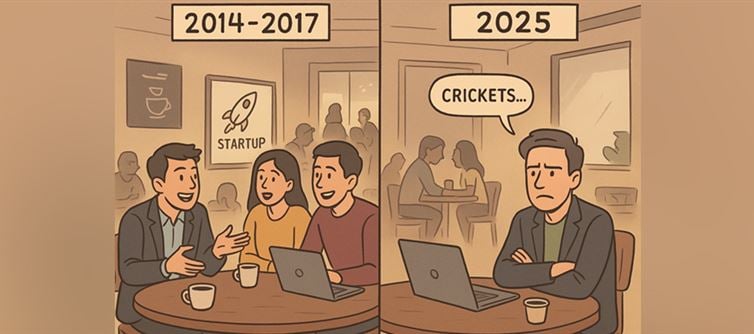
Remember 2014–2017? Every Starbucks, CCD, and coworking hub in india crackled with energy. Young founders pitched to angels over cappuccinos. Investors hunted for the next unicorn. Startup founders weren’t just entrepreneurs—they were celebrities.
Fast forward to 2025, and the buzz feels muted. Startups still exist, funding still flows, but the frenzy is gone. What happened to that golden era?
Here are five big reasons:
1. The Funding Faucet Slowed
Seed funding, once overflowing, shrank post-2017. Angel tax spooked early investors, and global VCs shifted toward mature, de-risked firms. The free-flowing money that fueled the craze simply dried up.
2. The Talent Crunch
Startups faced a shortage of skilled talent—tech workers chased fat MNC salaries while young recruits wanted startup glamour but not the grind. Scaling teams became harder than raising rounds.
3. Regulatory Speed Breakers
From GST compliance nightmares to unpredictable policy shifts, red tape strangled small players. The same founders who once thrived on speed got stuck in paperwork and penalties.
4. The Innovation Plateau
Copy-paste models dominated—another food delivery app, another e-commerce platform, another payments startup. Without real innovation, fatigue set in for both customers and investors.
5. Pandemic + Inflation = Harsh Reality Check
COVID wiped out fragile business models, exposing high cash burns. Even in 2025, inflation and tighter investor scrutiny force startups to focus on profitability over hype.
🔥 Bottom Line: India’s startup scene isn’t dead—it’s evolving. The golden café-era buzz may be gone, but in its place is a grittier, more grounded ecosystem where survival, sustainability, and profitability are the new mantras. The frenzy may have faded, but perhaps this is the maturity indian startups always needed.




 click and follow Indiaherald WhatsApp channel
click and follow Indiaherald WhatsApp channel